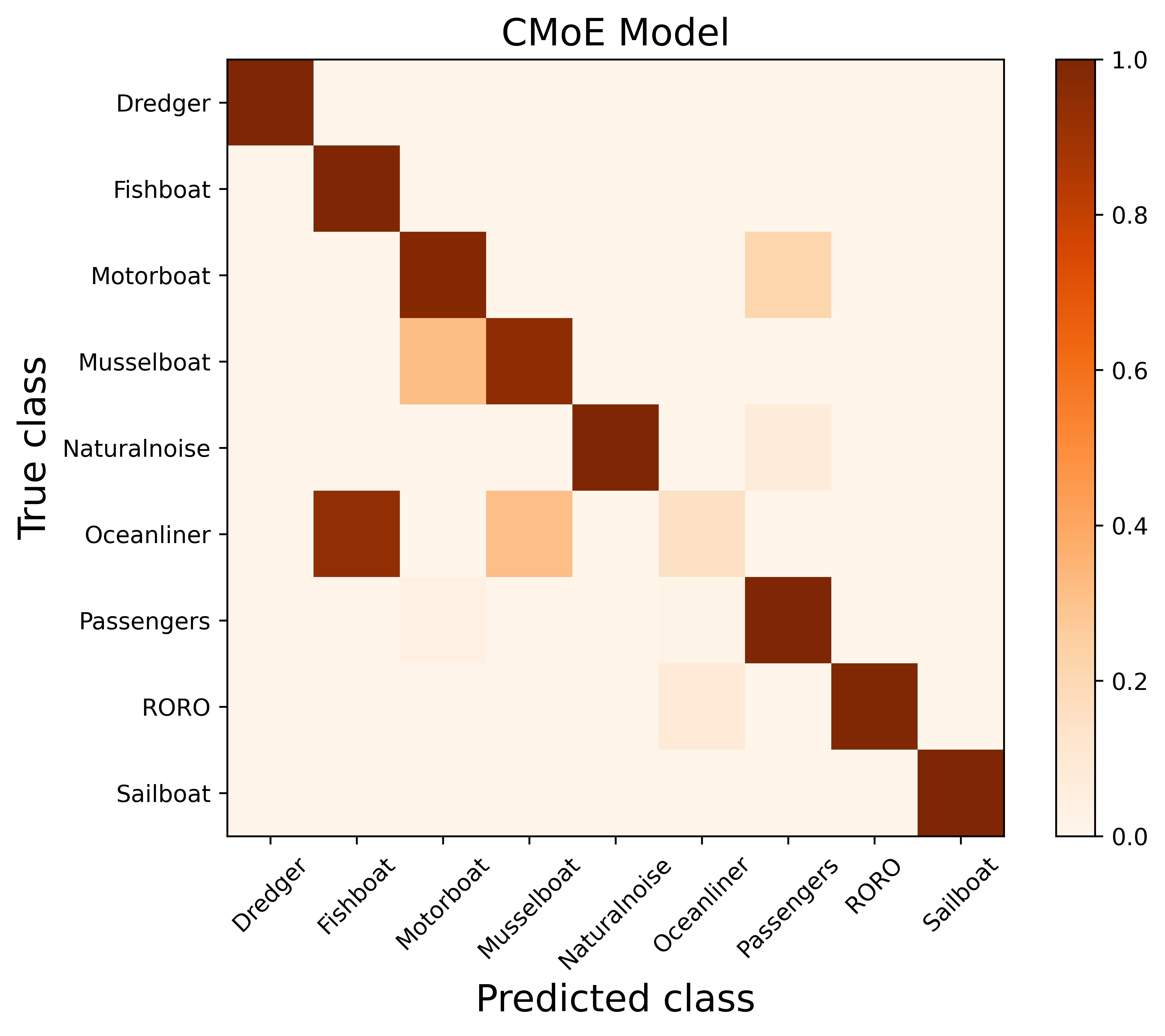This is the PyTorch implementation of the paper:
"Unraveling Complex Data Diversity in Underwater Acoustic Target Recognition through Convolution-based Mixture of Experts",
which has been published on Expert Systems with Applications.
DOI: https://doi.org/10.1016/j.eswa.2024.123431
Arxiv: https://arxiv.org/abs/2402.11919
In addition to the model architecture (cmoe_model.py), this repository offers pre-extracted features of the Shipsear test set, accompanied by corresponding testing code.
git clone https://github.com/xy980523/UATR-CMoE.git
cd UATR-CMoE
pip install -r requirements.txt
Download link:
Pre-extracted features: https://github.com/xy980523/UATR-CMoE/releases/download/features/features.zip
Pre-trained checkpoint: https://github.com/xy980523/UATR-CMoE/releases/download/checkpoint/best_model.ckpt
Save features to your own path (/path_features):
mkdir -p /path_features
unzip features.zip -d /path_features
And make sure ``best_model.ckpt'' is in the UATR-CMoE folder.
python test.py /path_features
It will produce the accuracy and confusion matrix on the Shipsear test set.
python draw_confusion.py
It will produce the confusion matrix heat map (see Fig. 5 in the paper).
@article{xie2024unraveling,
title={Unraveling complex data diversity in underwater acoustic target recognition through convolution-based mixture of experts},
author={Xie, Yuan and Ren, Jiawei and Xu, Ji},
journal={Expert Systems with Applications},
pages={123431},
year={2024},
publisher={Elsevier}
}

